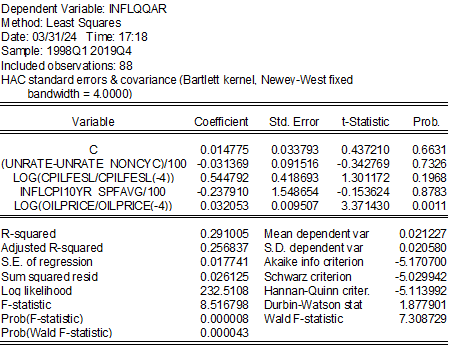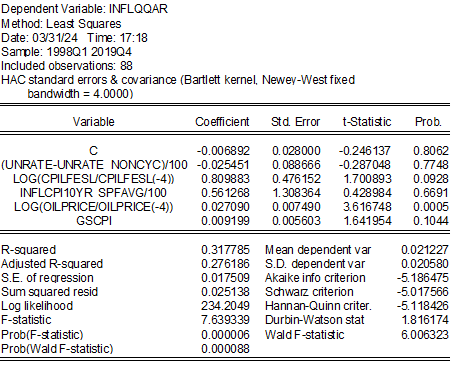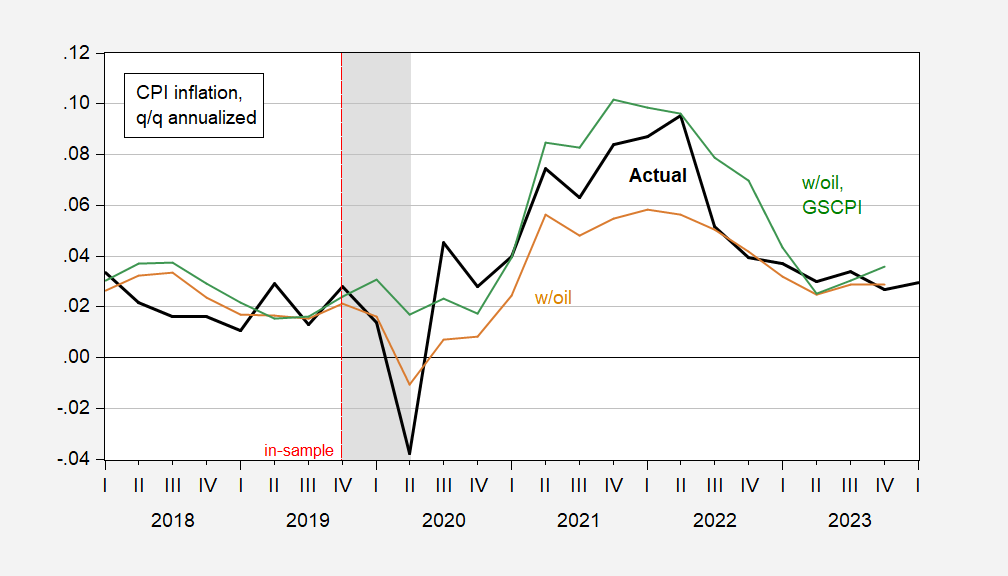In tomorrow’s lecture on the Phillips Curve and the latest inflation surge for Econ 442, I ask whether or not a modifed Blanchard-Cerutti-Summers (2015) Phillips Curve specification can predict the disinflation. Reply: Sure.
BCS use:
I modify by (1) unconstraining the coefficients on anticipated and lagged y/y inflation, (2) utilizing lagged y/y core as a substitute of headline CPI, (3) utilizing the relative inflation charge of oil as a substitute of imported supplies, and/or (4) including the NY Fed’s World Provide Chain Stress Index (GSCPI). I then estimate 1998-2019 (the pattern dictated by availability of the GSCPI, and avoiding the pandemic):


Augmenting with GSCPI.


The unemployment hole is available in with the best signal, albeit not statistically considerably so. Oil worth inflation is sort of vital, as is the GSCPI. Be aware the impression of the GSCPI is available in a pattern that predates the covid pandemic.
Utilizing these two regressions to conduct out of pattern predictions, I get hold of the next:

Determine 1: Quarter-on-Quarter CPI inflation annualized (daring black), out-of-sample match from modified BCS regression (tan), and from modified BCS regression augmented with GSCPI (inexperienced). NBER outlined peak-to-trough recession dates shaded grey. Supply: BLS, NBER, and creator’s calculations.
Imply Error (RMSE) for the w/oil specification is 1.3%(1.4%) and for the w/oil, GSCPI is -1.0%(1.2%), with 12 observations 2021Q1-2023Q4.
The truth that the GSCPI-augmented equation predicts the inflation and disinflation higher than the oil-alone specification suggests to me that the surprising (by some) persistence of inflation is as a result of unanticipated disruptions in provide chains.




